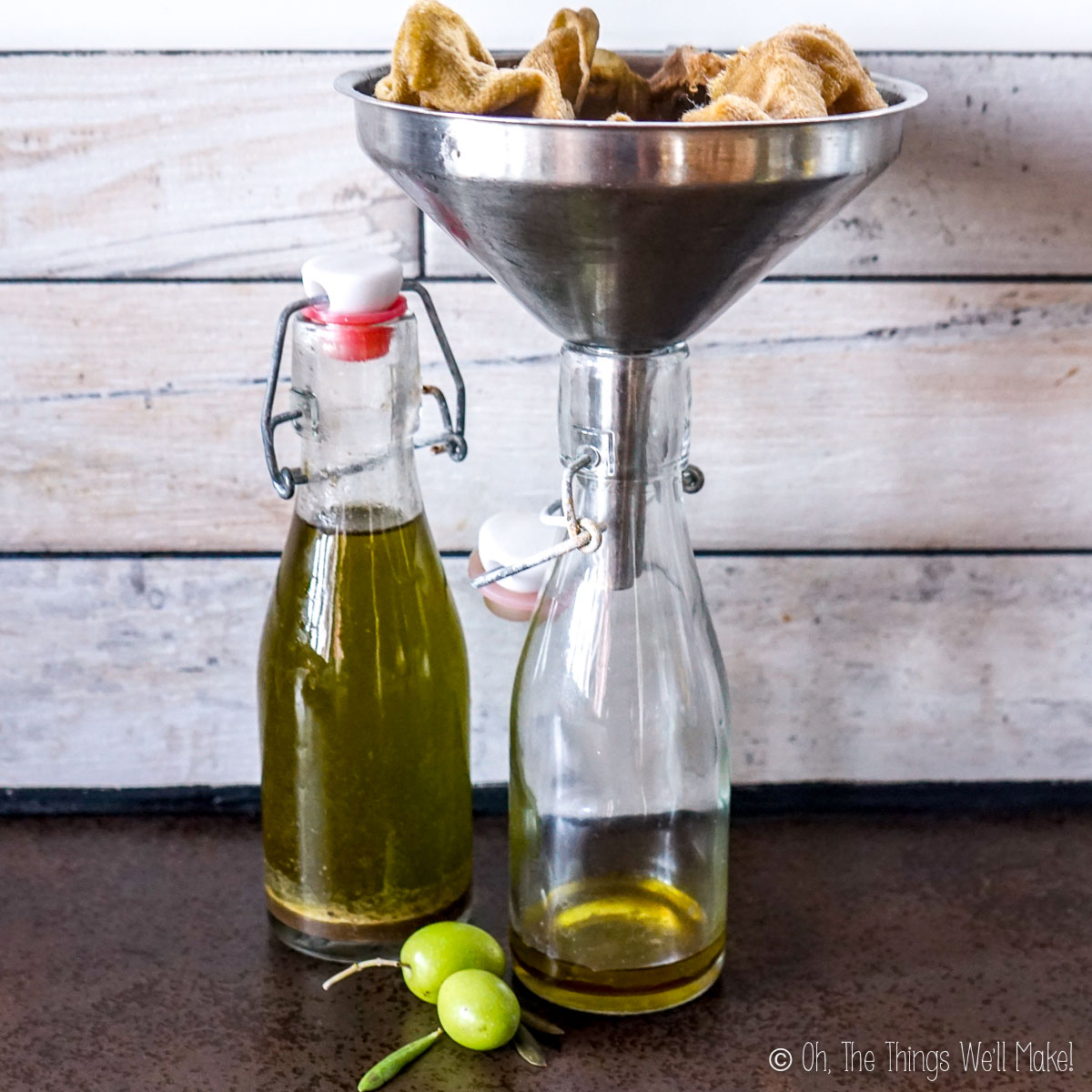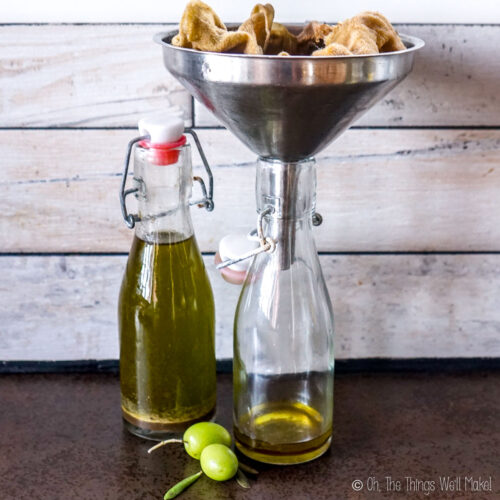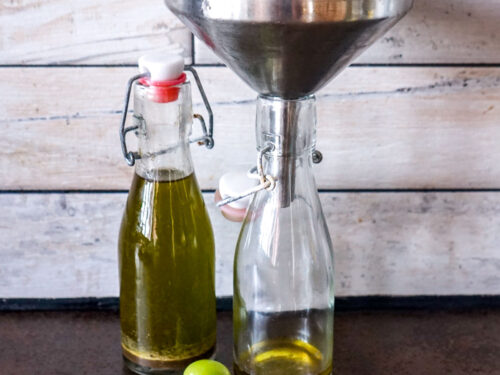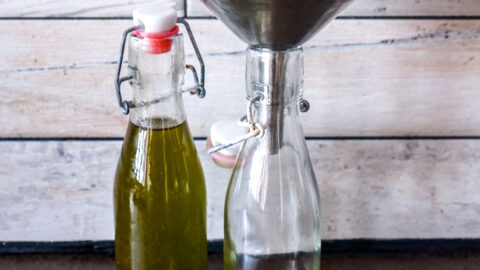





Naturally extracted from olives, olive oil is one of the healthiest oils available. It's not difficult to make your own olive oil at home.
Prep time: PT120M
Total time: PT720M
4.86 stars (7 reviews)
olive oil recipe
- Add the olives to a food processor or blender and process them at a very low speed to blend the pulp of the olives without breaking up the pits. (Blending at too high of a speed could damage your blender.)
- If using an immersion blender or a blender with a narrow base, the pits may end up getting stuck between the blades. In that case, remove the olive pits in order to blend the pulp well without damaging your blender. (Once you have blended the olives a bit, the pits should be easy to remove from the rest of the olive mush.)
- Blend the olives at low speed for several minutes. This will not only blend the pulp more thoroughly but will also give off heat, which will help the olives release their oil.
- After blending, strain out the olive pulp and pits from the liquids using either a strainer or a cotton cloth. The resulting liquid will be a mixture of olive oil and water-soluble olive juice.
- At first, the liquid will look pretty uniform. Allow it to settle and separate. After some time, the liquid should separate into at least 2 layers with the oil layer floating on top of the juice (water-soluble layer).
- Siphoned out the lower layer of liquid using food-grade tubing. If you don't have food grade tubing, you can also use straw to help remove the olive juice. (Discard the bitter juice.)
- Filter the oil by straining it through several layers of cotton cloth or cheesecloth. This can be done by lining a colander with the cloth and letting the oil filter through, leaving the olive solids in the cloth above.
- The oil should be clear now, but you may be left with some juice below it. (The two layers should now be more obvious and easy to distinguish.) Tilt the bottle of olive oil on an angle and use a thin straw to remove the liquid from the bottom of the bottle.